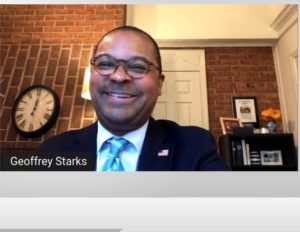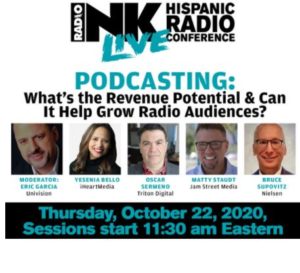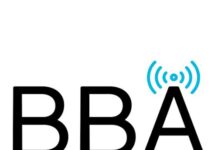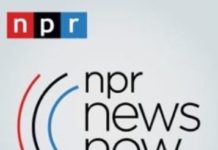
FCC Commissioner Geoffrey Starks was the keynote speaker for week three of Radio Ink’s Hispanic Radio Live Conference Thursday. During his presentation called The Enduring Legacy of Radio, Starks said radio is a trusted source for information in the Hispanic Community. He also opined on minority ownership where he stated ‘something is off.’
According to Starks the FCC’s latest numbers from October 2017 show that Hispanics own 209 of the 3400 commercial AM radio stations (6.1%) and 219 of the 5400 commercial FM stations (4.1%). “What makes these numbers so alarming is that there are almost 61 million people who identify as Hispanic and Latinx in the U.S., which is about 18 percent of the population. Something is off.”
Starks said making America’s broadcasters look more like the population of America is important to him for several reasons. “The FCC has a statutory mandate to promote media diversity, in addition to the critical role we play in securing and protecting public access to information. We must make sure that everything—from who owns the broadcast license to who sits in front of the camera—reflects our diversity. To be even more clear, we must do better in fulfilling the Commission’s obligation to promote ownership by women and people of color.”
Starks went on to say that achieving greater media diversity is also personal for him. “Broadcasting is about more than simply entertainment or conveying information. What we see and hear, and who we see and hear it from, impacts the way we view our world, our society, and ourselves. I want my young daughter and son to see and hear content that speaks to them in a personal way, delivered by people and viewpoints that reflect the diversity that is America. To achieve that, we are going to have to find effective ways to move the needle on media ownership diversity.”
So what can be done to address the number? Starks is on the record in strong support of bringing back the tax certificate program as a means to try to level the playing field for those who traditionally lack access to the kind of capital and opportunities necessary to purchase or run a broadcast station. “Before being discontinued in 1995, the tax certificate program facilitated 287 certificates for radio stations and 40 certificates for TV stations, increasing minority broadcast ownership from 40 radio and TV stations in 1978 to 288 radio and 43 TV stations in 1995. That is real, significant progress, and if that program had continued the minority ownership numbers today might not be so underwhelming.”
Starks also believes the Commission is failing at making good on its statutory mandate to collect EEO data from broadcasters. “The agency has ignored Congress’s will for nearly 20 years by not collecting this information, leaving us with little visibility into the diversity of station management and news and production teams. Our continued dereliction of duty on the EEO data collection is simply unacceptable.”
The Commissioner also gave a shout out to GeoBroadcast Solutions, which has petitioned the FCC to revise the FM booster rule to allow geo-targeted content to originate from FM booster stations. He says the use of this geo-targeted content holds promise as a way for stations to provide hyper-localized content including alternative language news, weather, emergency alerts, and advertising periodically during the broadcast day. “It could provide a way for minority-owned stations to better serve their communities, and open up opportunities for small businesses looking to more cost-effectively advertise to a targeted audience and for FM stations owned by people of color to increase advertising revenue.”
Hispanic Radio Live continues Thursday, October 22.
See the agenda HERE
Register HERE






With most stations owned by corporations how can you even count demographics of who (meaning people) owns? It seems to me that diversifying ownership nationwide and in each market place would make it possible for more people to become involved in ownership including minorities and small business.
Instead of so many boosters those frequencies could be freed up to create more stations for small business and minority owners, stations that would serve a local audience. Regulations to prevent local stations from becoming nothing more than boosters for big markets miles away might also free up opportunities for small business and minorities.